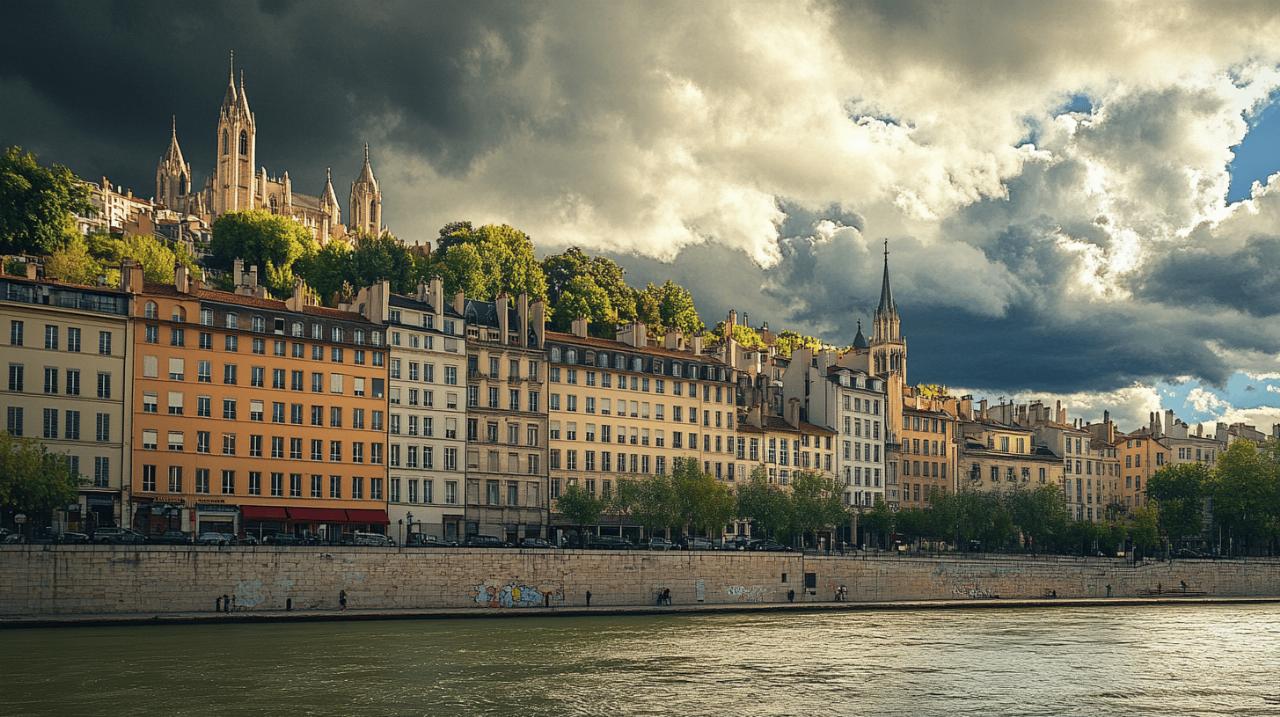Local Opinions on Lyon Weather Forecasts: What Residents Really Think About Meteo a Lyon Predictions
Lyon, nestled gracefully in the heart of the Auvergne-Rhône-Alpes region, boasts a climate that intrigues both residents and visitors alike. With its temperate, semi-continental character shaped by oceanic and Mediterranean influences, the city experiences a fascinating interplay of weather patterns throughout the year. As locals glance up at the skies and check their forecasts, they form opinions about the reliability and accuracy of meteorological predictions. This article delves into what residents truly think about Lyon's weather forecasts, exploring the nuances of temperature, precipitation, wind, and sunshine that define daily life in this vibrant French city.
Temperature trends and cloud cover: lyon's weekly forecast breakdown
Understanding Lyon's Microclimate in the Auvergne-Rhône-Alpes Region
The geographical position of Lyon between the Alps and the Central Massif creates a distinctive microclimate that often challenges forecasters. This semi-continental climate brings hot summers and cold winters, with average temperatures dipping to around three degrees Celsius in January and climbing to twenty-eight degrees in July. The warmest month, July, sees highs averaging twenty-seven point seven degrees Celsius, accompanied by up to fifteen point seven hours of daylight in June. Conversely, January stands as the coldest month, with lows hovering around one point six degrees. Residents frequently discuss how this temperature variability impacts their daily routines, from morning commutes to evening leisure activities. The interplay between Mediterranean warmth and Alpine coolness means that forecasts must account for sudden shifts, making accurate predictions a topic of considerable local interest.
Cloudy Skies and Maximum Temperature Expectations for the Week Ahead
As Lyonnais residents prepare for the week ahead, they often find themselves staring at forecasts promising extensive cloud cover. The skies above this historic city can be deceptively overcast, with thick layers of clouds obscuring the sun for extended periods. Tomorrow, for instance, temperatures are expected to range between eight and seventeen degrees Celsius, with only a modest ten percent chance of rain. This pattern of cloudy conditions without significant precipitation is familiar to locals, who have learned to dress in layers to accommodate the felt temperature that can differ markedly from the actual reading. The maximum temperature forecasts help residents plan outdoor activities, though many express scepticism when predictions seem overly optimistic. June typically averages twenty-four point three degrees with eighty-seven millimetres of rain, eleven hours of sunlight, and sixty-three percent humidity. July and August follow similar patterns, with temperatures hovering around twenty-six degrees and moderate rainfall. These figures, while useful, are often debated in cafes and workplaces as locals compare forecasts with lived experience.
Precipitation patterns and humidity levels: what lyon residents should expect
Rainfall Distribution Across Different Areas of the City
Lyon receives an average of one thousand and fifteen millimetres of rain per year, with October emerging as the wettest month. This substantial rainfall, distributed across approximately eighty-five rainy days annually, mostly falls between October and April. Residents in different areas of the city report varying experiences with precipitation, as the urban landscape and proximity to the Rhône river can influence local conditions. The driest month, February, brings only about forty-four millimetres of rainfall, offering a brief respite from the otherwise consistent presence of moisture in the air. Locals often discuss how forecasts sometimes underestimate or overestimate rainfall intensity, leading to either unnecessary umbrella carrying or unexpected drenching. The distribution of rain across the city is a frequent topic of conversation, with some neighbourhoods seemingly blessed with clearer skies while others endure persistent drizzle.
Dew Point and Atmospheric Pressure: Reading the hPa Values
For those with a keen interest in meteorological details, the dew point and atmospheric pressure readings offer valuable insights into humidity and weather stability. The wind brings humidity levels between seventy and eighty percent most of the year, creating a close, sometimes oppressive atmosphere. Monitoring the hectopascal values helps residents anticipate weather changes, as low pressure often signals approaching storms or unsettled conditions. The dew point, which indicates the temperature at which air becomes saturated with moisture, is particularly relevant during warmer months when humidity can make temperatures feel considerably higher. Spring sees temperatures rise from two point seven degrees in March to nineteen point seven degrees in May, with humidity levels fluctuating accordingly. Autumn temperatures range from twenty-two point seven degrees in September to ten point eight degrees by November, with similar humidity variations. Residents who pay attention to these technical details often express frustration when forecasts fail to adequately communicate how humid conditions will feel, rather than simply reporting raw temperature figures.
Wind Conditions Along the Rhône: Gusts, Direction and Average Speeds
Forecasting Wind Patterns from the North and West
 Wind patterns in Lyon are significantly influenced by the city's position along the Rhône river, with gusts often funnelling through the valley created by the surrounding topography. Forecasters typically track winds originating from the north and west, which can bring cooler air masses and increased turbulence. The direction and average speed figures provide residents with a sense of what to expect, though locals living near the riverbanks report that actual conditions can exceed predictions. Summer months, from June through August, see temperatures between twenty-four and twenty-seven degrees, but occasional thunderstorms bring sudden wind surges that catch many off guard. The city experiences roughly twelve days with storms per year, mainly from May to August, and these events often feature dramatic wind shifts. Residents debate the accuracy of wind speed forecasts, noting that sheltered areas of the city experience calmer conditions while exposed locations face significantly stronger gusts.
Wind patterns in Lyon are significantly influenced by the city's position along the Rhône river, with gusts often funnelling through the valley created by the surrounding topography. Forecasters typically track winds originating from the north and west, which can bring cooler air masses and increased turbulence. The direction and average speed figures provide residents with a sense of what to expect, though locals living near the riverbanks report that actual conditions can exceed predictions. Summer months, from June through August, see temperatures between twenty-four and twenty-seven degrees, but occasional thunderstorms bring sudden wind surges that catch many off guard. The city experiences roughly twelve days with storms per year, mainly from May to August, and these events often feature dramatic wind shifts. Residents debate the accuracy of wind speed forecasts, noting that sheltered areas of the city experience calmer conditions while exposed locations face significantly stronger gusts.
Peak Gust Values and Their Impact Near the Riverbanks
The peak gust values forecasted for Lyon hold particular importance for those living or working close to the Rhône. These maximum wind speeds can affect outdoor dining, cycling commutes, and even structural concerns for older buildings. The wind conditions are most noticeable during transitional seasons when competing air masses create instability. Spring and early autumn are considered the best times to visit Lyon precisely because temperatures are moderate and wind conditions generally remain manageable, with late spring from May to June and early autumn in September offering pleasant weather. However, even during these favourable periods, sudden gusts can surprise residents, leading to discussions about whether forecasting models adequately capture the localized effects of the river valley. The Festival of Lights, which attracts over two million visitors despite occurring in cold weather, showcases how Lyonnais have learned to adapt to wind and cold, though many wish forecasts provided more detailed guidance on wind chill effects.
Sunshine Hours and Nighttime Visibility: Making the Most of Lyon's Weather
Sunrise and Sunset Times Throughout the Week
Lyon enjoys approximately two thousand hours of sunshine annually, distributed unevenly across the seasons. The longest days occur in June, with up to fifteen point seven hours of daylight, while winter months see significantly reduced sunshine. Residents keen on outdoor activities closely monitor sunrise and sunset times, planning their schedules to maximise exposure to natural light. The city's location between the Alps and Central Massif means that cloud cover can persist for extended periods, making those fleeting moments of sunshine all the more precious. Summer brings long, sunny days with eleven to eleven point four hours of sunlight in June and July respectively, though occasional thunderstorms interrupt the brightness. Autumn daylight decreases progressively as temperatures drop from twenty-two point seven degrees in September to ten point eight degrees by November. Locals often express disappointment when forecasts promise sunny intervals that fail to materialise, leading to a general scepticism about optimistic predictions.
New moon darkness and star-gazing opportunities during clearer breaks
The phases of the moon add another dimension to Lyon's nocturnal atmosphere, with the new moon creating particularly dark nights ideal for star-gazing when cloud cover permits. However, with the frequent overcast conditions typical of the region, clear breaks are cherished opportunities for astronomy enthusiasts. The visibility forecasts become crucial during rainy periods, as moisture in the air can significantly reduce clarity even when precipitation has ceased. Winter months, with temperatures averaging around one point one degrees in December and even lower in January, offer crisp, clear nights when skies cooperate. Residents who venture out during these periods often discuss how forecasts rarely capture the aesthetic quality of the night sky, focusing instead on temperature and precipitation. The combination of new moon darkness and breaks in cloud cover creates magical moments that locals treasure, though these are difficult to predict with precision. Heatwaves, now more common than in the two thousands, also affect nighttime visibility, as humidity and particulates can linger in the air. The ongoing conversation about forecast accuracy in Lyon reflects a community deeply connected to their environment, eager for predictions that match the nuanced reality of life in this beautiful French city.
